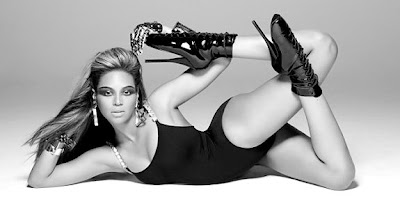Sunday, July 26, 2009
Digging Santigold
Sunday, July 19, 2009
Paul Newman vs. Marlon Brando
Wednesday, July 15, 2009
Random Pictures
Saturday, July 11, 2009
Away We Go: Three Thumbs Up

Away We Go is a good film because it shows protagonists living life. Why does this make a good movie? You ask. It seems simple enough, but I’m not sure many, if any of you, know how to do this and movies these days get by with gimmicky storylines, explosions, and Judd Apatow (no disrespect). But to have a movie that just shows life in innocent purity is truly a rarity and a jewel.
In Sam Mendes' (American Beauty, Jarhead) charming film, Verona (Maya Rudolph, daughter to Minnie Riperton) and Burt (John Krasinski, The Office) find themselves pregnant and stranded by the latter’s parents and bestowed with the gift of latitude. The movie then finds itself a sequence of settings in which the endearing couple learn bits of life in each diorama with its own inhabitants, like some awesomely twisted nature show, but rather than Steve Irwin (Coco bless his soul), Verona and Bert are left to poke and cajole the creatures of parenthood and independence.
Our story’s heros seem fragile and strong, and the film is not shy about implying their moral superiority to every crazy they encounter. And they encounter a plethora of crazy. Usually, I detest a stellar dramatis personae but in this case, the entire bill (including random extras) create a seemingly endless ripple of laughter halted by sudden, blunt eddies of deep emotion. Allison Janney, Jim Gaffigan, Catherine O’Hara, Jeff Daniels, Melanie Lynskey, and Paul Schneider (to name a few!) embody their respective stereotypes, but add an undertone of unique wholesomeness, in sense of originality (certainly not appropriateness).
Rudolph and Krasinski also remain 100% believable 96% of the time, but in those lingering 4% we can see and hear only Dave Eggers and Vendela Vida writing cliché into this otherwise beautifully surprising script. These moments are unnatural and forced, but necessary and overall contribute more to the film than they sacrifice, but these scenes of jejune sentimentality and sporadic artsy-for-the-sake-of-artsy shots stir a reaction this side of parental disappointment towards a sloppy child.
But overall I find the film absolutely satisfying, a laugh riot (Africa, O Africa) and I was sad when it was over. There were no gimmicks or antics, no unrealistic plot twists, because there is little plot. And I don’t consider myself betraying you by revealing this, because Away We Go is not about what happens, but how Burt and Verona live their lives. The pregnancy is a red herring for a simple look into the complicated lives of two people and the world around them. Go see it.
Also, apart from being spawn of siren Minnie, Maya Rudolph produced offspring with P.T. Anderson, director of the lionized There Will Be Blood and (perhaps adequately celebrated) Boogie Nights. The latter starred Mark Wahlberg, impersonated by Andy Samberg on SNL, of which Maya also stars.
Friday, July 10, 2009
It's Tricky to Romp Around


Thursday, July 9, 2009
ShopBop Contest






Wednesday, July 8, 2009
Movies I Want to See: Circa Summer 09
GQ: The Sartorialist Edition.




Monday, July 6, 2009
Check Out: Grizzly Bear
I Am... Clothed.

Nothing too special, but I feel like she's just making sure everyone knows she's not talking 100% lace bodysuits before she puts a ring on it. Def digging the shoes.
 There's the Beyonce we all know and love... or the Sasha?
There's the Beyonce we all know and love... or the Sasha?
Sunday, July 5, 2009
Shopbop.thebomb.com





Saturday, July 4, 2009
Public Enemies, or Waste of Time.

This is not the case for Public Enemies, the latest from Michael Mann (Colateral, Ali).
Now, Mr. Mann probably did not wake up and decide to make a reality-movie complete with platitudinous dialogue, over-staged setting and actors who think their lives are more exciting than any role they could play. Poorly. But watching this movie, one can't help but picture him in a stereotypical, black director’s chair with a beret and megaphone trying to make a such a movie. Perhaps this was neither his intention nor his fault; perhaps it took him hostage, like a bank client held up by John Dillinger, the film’s antihero, or you, an innocent moviegoer hostage by this movie….
The movie starts off with a prison break to get the incorrigible Dillinger (Depp) started on his next heist, and the viewer introduced. From the first glimpse, we find awkward angles, extreme close-ups and unnatural blotchy lighting which, although “revolutionary” gives an overall uncomfortable and disorienting impression. The choreography is about as exciting as a 1930s band of gangsters can get, but the conservative shots reveal little and in the following shots of the getaway car, we see only attempted-natural shots of shadowed faces with the light falling in just the wrong contours of the faces. Perhaps the a muster of this banal film is in the sequence of getaway shots as Dillinger gazes into the eyes of his dying friend as he lets go, literally, only to have the corpse slide into the dust of the penitentiary. How symbolic. Following are shadows and faces.
Thanks (maybe) to the date flashing across the screen, we know this story of bank robber extraordinaire takes place in 1933, else we may have never guessed from the digital quality of the fast paced scenes, like watching an episode of the Real Housewives of New Jersey, but rather than social climbing Italian women preening for the limelight, we have social climbing American John Dillinger aiming to be the extravagant Robin Hood during the depression, while also trying to get by without being marked on every street corner. Instead of the intended “tension of the scene” from the shakey shots and quick, jumpy cuts, the effect is a nauseating disgust for this ostensibly unedited definition. The uber realistic shots conflicting strategically placed time-accurate artifacts and music give a contrived-precision/anachronistic tension that radiates off the screen more like nuclear waste than memorable innovation.
When it comes to plot, Mr. Mann too seems conflicted as to whether or not this is a love story, or a goose-chase. Both, perhaps—a story about John Dillinger, the man? This seems possible, but the complete lack of any character development for John, his band of FBI antagonists, his lover, or any other of the MILLION characters in this movie makes it clear that depth is not the goal, even in this two hour twenty minute film, despite being, essentially, about one man. Not too mention Johnny Depp seems too excited about being paid to wear fedoras and three-pieces to care about being killed by the fledgling FBI led by a fat, and faux tanned J. Edgar Hoover (Billy Crudup).
Perhaps the biggest bane to this film is, ironically, it’s stellar cast. When an actor becomes larger than life, so that when you see him you think only other roles or tabloid shots of him at the beach, he no longer serves his purpose. This is true for Johnny Depp. (But to be fair, Angelina Jolie can't escape the tabloids, yet Eastwood’s opus Changeling suffers not from this foible.)
Alone, he may have not been so bad, but with Johnny Depp, Christian Bale, Marion Cotillard, and Billy Crudup in leading roles along with a litany of familiar faces in smaller parts, regardless of how good (or bad) their performances were, it comes off looking like a movie. This, in addition to gas-station-novel dialogue with nuggets of proverbial cheese lead to over-performed hackneyed phrases. The only natural, time-apt delivery comes from lawyer Louis Piquett (Peter Gerety) in a scene which unfortunately cannot save this movie. Otherwise, the trite lines spew forth with the typical old-movie music and Billie Holliday so perfectly played at every moment Billie Frechette (Cotillard), the love interest, is in the shot. The epitome of this forced iconicism is the intended culmination of the parallel between Dillinger and the antagonist and leading detective, Melvin Purvis (Bale). The two stand eye-locked on the opposite sides of a jail cell and exchange restrained resentment. Throughout the film, constant flashing between the two in parallel situations to not-so-coyly draw their similarities becomes obvious and superficial. And while Colleen Atwood’s (Memoirs of a Geisha, Chicago) costume designs are flawless, they portray every deep facet the audience is meant to understand, but the total lack of any personality makes them look like costumed actors out of GQ. And the excessive playbill cause for mustaches and novelties to distinguish them, which just looks absurd.
One success, if only, of Public Enemies is the timing of the climactic scenes, which come—as they should—as a surprise to the viewer and characters. This accomplishment is curtailed by the immediate video-game sequence of “action” consisting of random firework-gunshots like watching Call of Duty but in nondescript fields and hotels. The annoying frequency of these surprises dilutes the excitement, a classic suicide I like to remember as Playing With the Toy So Much It Breaks. And, to make sure you don’t lose the really special moments when something Big! happens, they’ll make sure to put it in slow motion, focus on a certain object, or repeat the phrase, or lyric 17 times.
In a word this film was a disappointment. In several, I am angered by it, and even more by the fact that people think that because it was different, it should be celebrated. They thought that about Courtney Love. But if you're into historical re-enactments, and want to feel like a 1930s agricultural worker in need for sustenance, but would rather be dealt kerosene covered oranges and have all your assets stolen from your intellectual bank, this is the movie for you.
Public Enemies is directed by Michael Mann; Screenplay by Mr. Mann, Ronan Bennet, and Ann Biderman, based on the book by Bryan Burrough; director of photography, Dante Spinotti; edited by Paul Rubell and Jeffrey Ford; music by Elliot Goldenthal; production designer, Nathan Crowley; produced by Mr. Mann and Kevin Misher; released by Universal Pictures. Running time: 2 hours 13 minutes.staring Johnny Depp, Christian Bale, Marion Cotillard, Billy Crudup, and Stephen Dorf. Photo (c) Universal Studios.
Friday, July 3, 2009
Two of My Favorite Things in One!... like a fish taco














